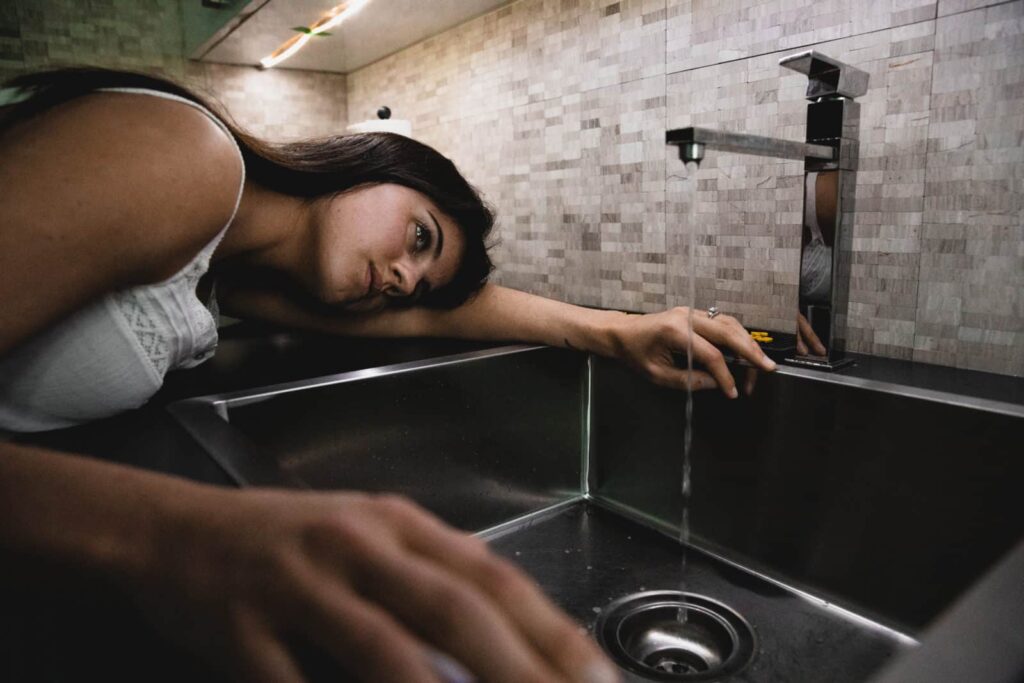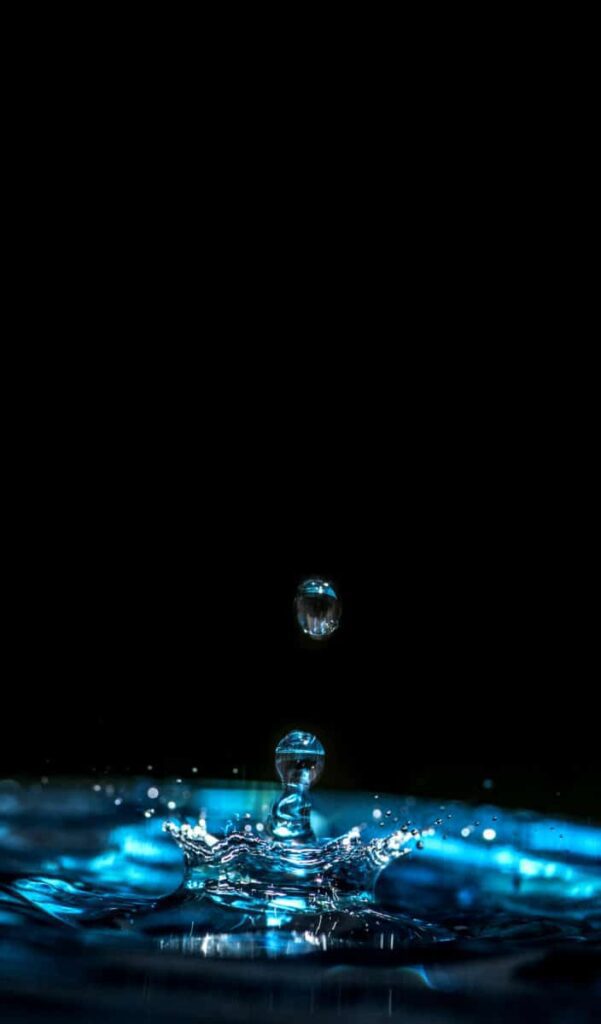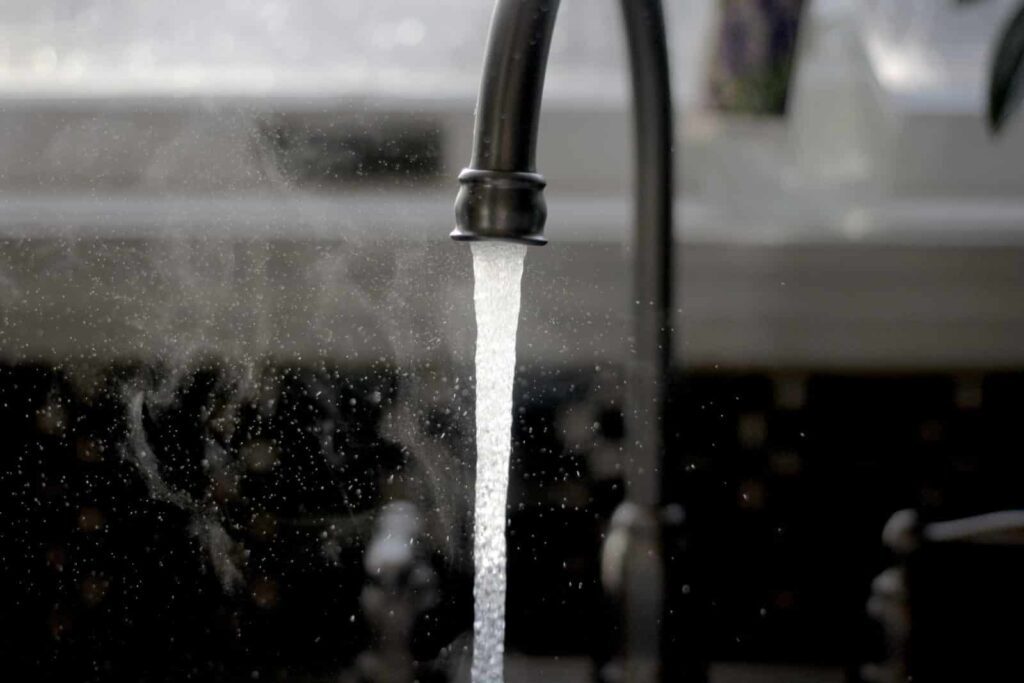Do you ever wonder what is present in your drinking water? Unfortunately, you don’t get a lot; local municipalities and the Tap Water Database show that water contains toxins, most of which are reduced to safe levels. However, long-term use of such water can become harmful to the users.
People drink water to quench their thirst after a workout, at night, dietary water, and during every dish of the day. It is not easy to tell what is in your drinking water. However, you must never be afraid of your drinking water. We have helpful information to educate you on what is in your glass of water.

You drink water every day. You use the same water for cooking and doing many other things. But have you ever taken the time to think about how water gets from the source to your faucet?
Well, you may say some pipping is done so that water gets to your facets. While that is true, there is more to that. This post takes you through the entire process. Ready to learn more? Let’s get started.
How Water Gets to Your Home: Where it all starts

About 73% of the earth’s surface is water. That means the water supply is unlimited. But here is the thing, only 2.5% is drinkable water. The remaining percentage is not. Drinkable water, also known as potable, pours from our facets and comes from two sources. That is, surface water and groundwater.
Surface water comes from non-saline water sources such as ponds, streams, and lakes. Groundwater, on the other hand, originates deep underground in veins known as aquifers. For groundwater to be accessed, drilling and pumping are two steps that must occur, with drilling starting and then pumping.
The process
From the source (either surface or ground), water goes through the same process once it is pumped to a storage basin. See the steps below for more information:
The water is checked for safety. The water will not move on to the next step if there are any contaminants.
Once it’s been determined that the water supply is safe, it is treated for impurities.
After treatment, water is filtered several times to make sure that it is pure.
Eventually, the water is stored in a reservoir. Then, finally, it is pumped through the water mains and into your home.
What can you add to your drinking water?

Some elements are added to drinking water on purpose in the treatment plant. They cannot be termed pollutants. Some might stain the water with taste and smell, but they make it healthier. Excessive addition of these elements can be harmful to consumers. They must be controlled.
Fluoride
Fluoride is usually added to all public water sources in the USA to help maintain all consumers’ clean and healthy teeth. Fluoride is common in many kinds of toothpaste to prevent tooth cavities and build tooth enamel. Fluorides are neurotoxins that damage the endocrine system, majorly in kids. Small amounts of fluorides are healthy. However, excess fluorides are harmful to the brain.
Chlorine
It is the second most used water additive after fluoride. Chlorine was first used to prevent bacteria growth in the city water supply. It also kills water-borne diseases and pathogens that could harm our health.
However, recent studies have proven that chlorine mixes with water to form hydrochloric acid. When consumed in large amounts, that could lead to impaired balance memory and respiratory problems.
Unless you are in the susceptible population bracket, you must never worry about chlorine in your drinking water. It introduces a chemical taste to water.
Water additives to worry about

Chlorine and fluoride are added intentionally to protect you. However, these will hurt you if they are in your drinking water.
Lead
Eating or drinking anything contaminated with lead will harm every organ in your body. It also causes developmental disorders. It is hard to taste lead in water. Inspect your water regularly and replace corroded pipes to keep lead off.
Mercury
The presence of mercury in your water is hazardous. Ingesting it can cause blindness, brain impairment, and mood swings, to mention a few. It mainly gets in your water through air pollution. Since you cannot control this, test and filter your drinking water daily.
Arsenic
This element finds its way to your drinking water via industrial waste. It has adverse health side effects like stomach issues. Consumption in excess triggers cancers or death.
Dioxins
Dioxins originate from smoke, be it burning oil, cigarette, or fires in your water supply. Dioxins are carcinogens and can lead to serious reproductive problems and damage the immune, nervous, and endocrine systems.
Dichloro-Diphenyl-Trichloroethane (DDT)
DDT is popularly used to control malaria and typhus. However, consuming it can cause liver issues, cancer, and reproductive system damage.
Perchlorate
Mainly used in rocket fuels and explosives. It infiltrates to contaminate the underground water. Once you drink the contaminated water, you will damage your thyroid, which is a big deal.
Polychlorinated biphenyls (PCBs)
This chemical got banned in the 1970s, but its effects are felt up to date. It is an industrial chemical that contaminates water to cause serious health effects. Cancer and damage to the endocrine, nervous, and reproductive systems results.
Dacthal
This herbicide does people no good when it gets in the drinking water. It also affects animals by damaging the liver, spleen, adrenal glands, and kidneys.
Hexachlorobenzene
This chemical is banned. It is a pesticide that contaminates water. It can cause death, liver disease, and skin lesions.
Methyl tertiary-butyl ether
It is scary because animals that ingest it have been known to experience seizures, kidney damage, and fetal development issues upon exposure or ingestion.
Others
You must not note the presence of these chemicals in your drinking water. However, you can still get sick if your water tastes normal because some contaminants are tasteless.
Giardia and cryptosporidium can get in your water if your treatment plan breaks down.
People in rural areas drink a lot of nitrates from fertilizer.
Contaminants will also come from old piping infrastructure.
Imbalanced pH levels can directly indicate the heavy contamination of your drinking water.
Don’t give up on drinking water. Instead, drink clean water and separate yourself from people who are affected.
PH variations
Do a quick pH check to check the level of water contamination. Safe water ranges at a pH of 6.5 and 8.5. Else you need to inspect your water. Use this reference chart to check your water.
- Ocean water – 8 pH
- Tap water – 7.5 pH
- Acid rain – 5 – 5.5 pH
- Bottled water – 6.5 – 7.5 pH
- Distilled reverse osmosis water – 5 – 7 pH
- Alkaline labeled bottled water – 8 – 9 pH
Keep drinking
- Read about all possible contaminants in your drinking water.
- Test your water-start with a pH test.
- Talk to some professionals and people responsible for the water you are drinking. These are the municipality, landlord, local governments, and local representatives.
Remember this
While potable water may be safe, it is not necessarily healthy. This is because of elements such as chlorine and fluoride added to water. These chemicals can hurt us despite having some benefits.
Besides, even after removing them through water filtration, still, natural water contains harsh minerals that can damage the skin, hair, appliances that use water, and plumbing.
The best solution to safer water is water filtration systems and water softeners.

Jay
Jay is a health and wellness enthusiast with expertise in water quality and nutrition. As a knowledgeable advocate for holistic well-being, Jay successfully manages Type 2 Diabetes through informed lifestyle choices. Committed to sharing reliable and authoritative insights, Jay combines firsthand experience with a passion for enhancing health."
